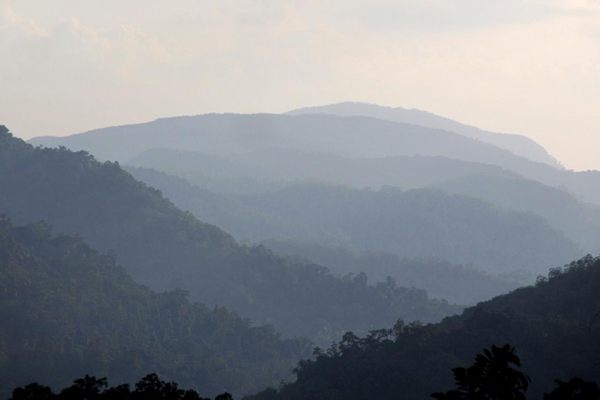For 78,000 Years, People Have Called a Kenyan Forest Cave Home
The layers of Panga ya Saidi reveal millennia of subtle cultural and technological change.

The Dzitsoni hills wiggle down the Kenyan coast, starting west of the country’s oldest city, Mombasa, and stretching some 50 miles north. They’re several miles from the shore, with a limestone foundation invisible beneath a thick crust of humid, tropical forest. For 78,000 years, these hills have been home to generation after generation of people, living in a tangle of caves in the foothills.
The entire cave network of Panga ya Saidi is a little over half a mile in length, Michael Petraglia, of the Max Planck Institute, told Haaretz. It is used to this day, though no one has lived inside for many centuries. Instead, these caves, with a main chamber around the size of a small church, are the site of burials and rituals. Petraglia was one of 28 researchers from around the world involved in a recent archaeological excavation and study of Panga ya Saidi, with results published this week in the journal Nature Communications. These excavations, the scientists say, show tens of thousands of years of subtle cultural and technological change.
People first started living in the caves in what is usually called the Middle Stone Age. At first, their technology use seems to have been minimal. Then, some 10,000 years later, the archaeologists say, something shifted, and they began shaping stone into more sophisticated arrowheads, blades, and other tools. From 20,000 years after that, they began producing art, carving images and designs into pieces of bone or tusk.
Three seasons of excavation, between 2010 and 2013, reveal other facts about how these people lived. Despite being close to the coast, they don’t appear to have fished, instead living off the animals and plants they found in the forests around the network of caves. (They did, however, gather shells, which they made into beads.)
Flora, fauna, and human life alike seem to have been protected against the fluctuating climates across the rest of Africa, where rainfall waxed and waned. Here, on the Kenyan coast, rain levels remained consistently high. This may be part of the reason why, around 60,000 years ago, the number of people living in the cave increased quite so rapidly.
There are plenty of conclusions to be drawn from these caves—most notably, that people flourished in all kinds of environments, including coastal tropical forests. “The finds at Panga ya Saidi undermine hypotheses about the use of coasts as a kind of ‘superhighway’ that channeled migrating humans out of Africa, and around the Indian Ocean rim,” Petraglia said, in a statement. Instead, for many, they seem to have been a permanent home.























Follow us on Twitter to get the latest on the world's hidden wonders.
Like us on Facebook to get the latest on the world's hidden wonders.
Follow us on Twitter Like us on Facebook